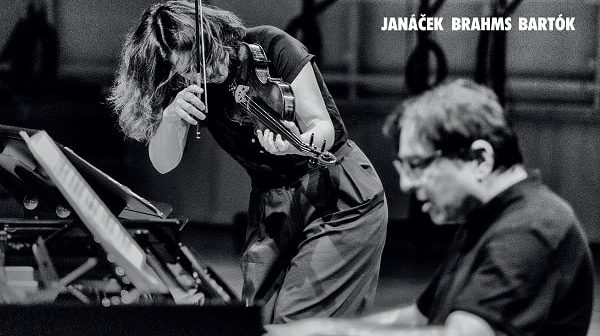This page is also available in / Cette page est également disponible en:
Français (French)
-
Alpha-Classics4
Spot the odd man out here (the last two words can be read as a production credit).
Janacek and Bartok occupied a tranche of east-central Europe, sharing a riff of off-beat rhythms and a penchant for quarter-tones, almost atonal. Brahms did none of these. He was a Hamburger by origin, inclination and diet. What he’s doing in this Slav-Baltic sandwich album is frankly unfathomable.
The performers, Fazil Say and Patricia Koptachinskaya, are respectively Turkish and Moldavian, close enough to Janacek and Bartok. PatKop’s violin attack in the 1914 Janacek sonata is so edgy it’s almost off the cliff. Say throws her a desperate safety rope. She ignores it, playing even close to the precipice.
This is not, by any stretch of my imagination, easy listening. Life was hard in the Carpathians and the composer means you to hear it. The First World War has just begun. Take cover. This performance, abrasive as it may be, puts the listener right in the front line. It’s not for the faint-hearted.
The Bartok sonata, dated 1921, extracted modernism from rough bucolic sources, much as Picasso did in his Blue Period. Uncompromising in its opening bleakness, it finds eventual relief in the furious, superspeed propulsion of a near-suicidal finale. PatKop plays it impossibly fast, thrillingly so.
So tell me: what is Brahms’s gentle 1888 sonata doing in the middle of this album? Answers auf einem Ansichstkarte, bitte. Or sur une carte postale.
NL
This page is also available in / Cette page est également disponible en:
Français (French)













1 Comment
Pingback: Why is there a Hamburger in this album? | TraxBeater